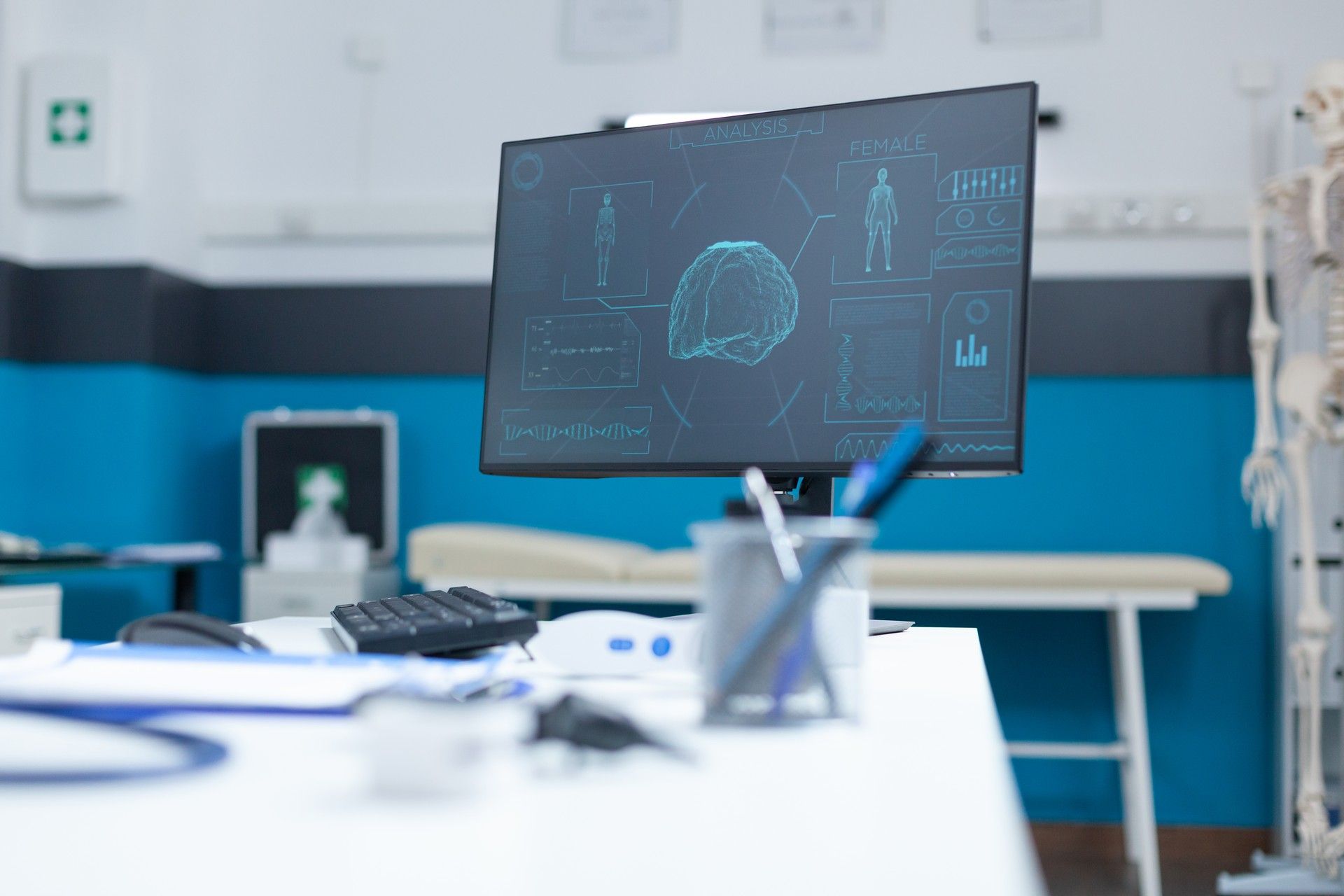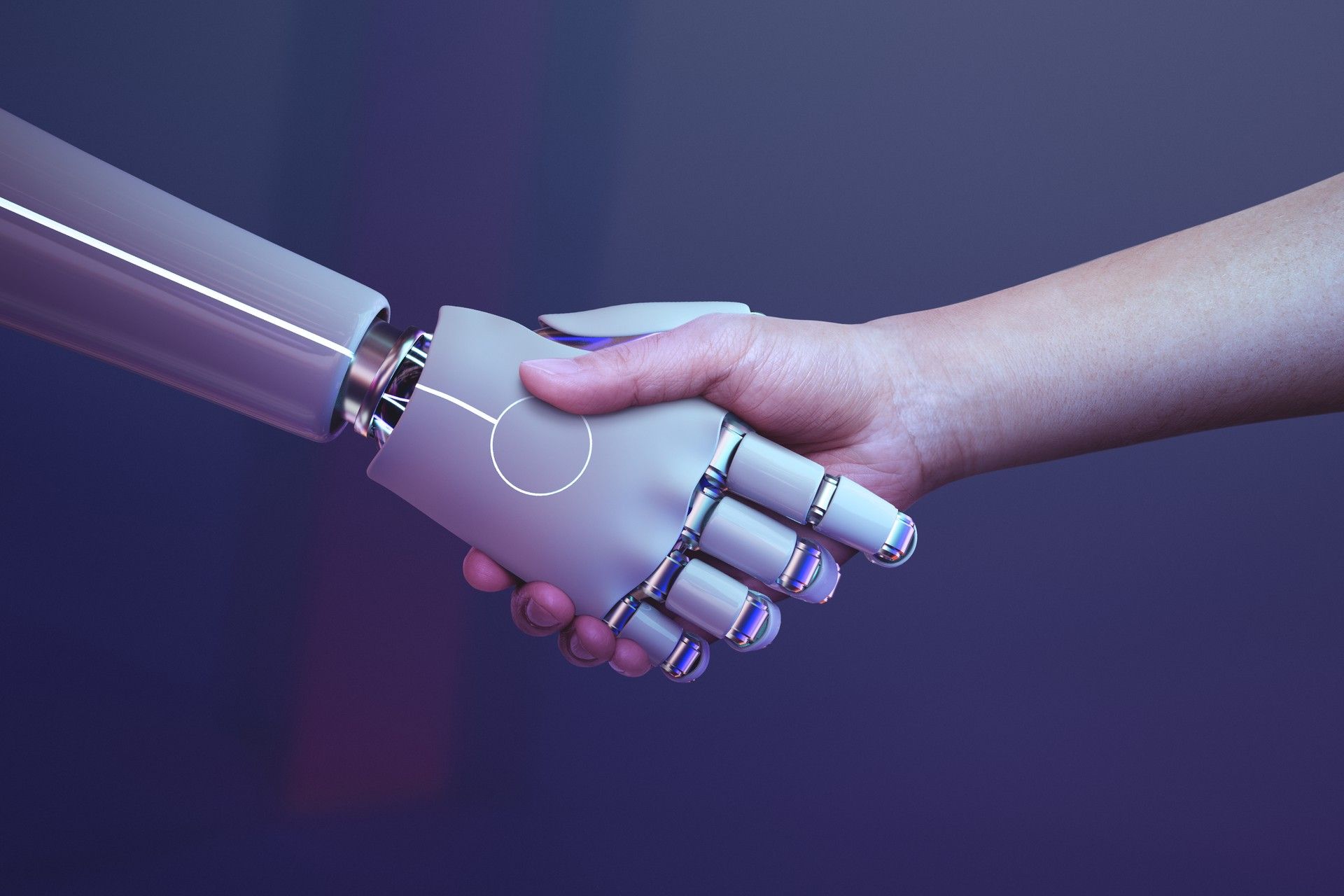Do you feel that you are oblivious to the biggest innovations of artificial intelligence while acknowledging the evolution of technology? Yes, AI is already more integrated into our lives than we think.
The rapid advancement of technology has given rise to one of the most groundbreaking innovations of our time: artificial intelligence (AI). AI, often referred to as the simulation of human intelligence in machines, has revolutionized industries, redefined possibilities, and transformed the way we perceive the world around us thanks to all the innovations of artificial intelligence.
Artificial intelligence has seen remarkable progress in recent years, leading to numerous breakthroughs and innovations. This technology, which used to be worked behind locked doors of big companies, now meets us in almost every aspect of our daily lives. Especially in the last quarter of 2022, when OpenAI released the ChatGPT bot that changed the way we look at the internet, there is almost no one left in modern society who has not yet met this concept.
While we are no longer strangers to the concept, we are still oblivious to the rapidly changing technology around us. Many people who are not in the technology world have difficulty understanding the power and algorithm behind many innovations of artificial intelligence that have entered our lives in recent years. Let’s take a look at the biggest innovations of artificial intelligence in recent years.

What are the biggest innovations of artificial intelligence?
As we said, we are no longer strangers to this technology and almost every giant company has started to invest in this field. As the technology of the future, AI, brings us step by step closer to a world that we once had difficulty even imagining.
In fact, AI is an idea born out of humanity’s desire to achieve perfection and the acceptance that every biological creature cannot be faultless. So what did we imagine? We dreamed of creating an algorithm with almost zero margin of error, a helper that could perform tasks as simple as adding two two-digit numbers or as difficult as splitting an atom. A man-made being that can sometimes be a friend and sometimes a teacher…
Societal and ethical considerations aside, innovations of artificial intelligence, although a new technology, are already touching many aspects of our lives.
Decoding the complexity of human language
Perhaps one of the most awe-inspiring innovations of artificial intelligence is the development of Natural Language Processing (NLP) capabilities. This groundbreaking innovation has brought machines closer to understanding, processing, and generating human language, opening doors to a world of possibilities previously considered just science fiction. At the forefront of NLP’s transformative power lies the remarkable evolution of language translation tools, marking a watershed moment in making communication across languages more accessible and seamless than ever before.
NLP is the embodiment of AI’s ambition to grasp the nuances and intricacies of human communication. It equips machines with the ability to decipher context, recognize sentiment, and derive meaning from strings of words. This transformation is not confined to mere text interpretation; it extends to understanding spoken language, fostering a bridge between humans and machines that was once thought to be an insurmountable divide.
The most remarkable outcome of AI-powered NLP is the advancement of language translation tools. Gone are the days when language barriers hindered cross-cultural interactions. AI has enabled machines to become proficient translators, facilitating communication between individuals who speak different languages. This transformation is not merely about converting words; it’s about preserving the essence and intent of the message across linguistic landscapes.

Language translation tools powered by AI leverage the knowledge gleaned from vast repositories of multilingual content. By identifying patterns and structures within different languages, AI algorithms can seamlessly translate phrases, sentences, and entire documents. This not only promotes intercultural understanding but also opens avenues for international collaboration and the exchange of ideas on a scale previously unimaginable.
The pinnacle of AI-powered language translation can be witnessed through services like Google Translate and DeepL. Utilizing real-time processing and AI algorithms, platforms like these have achieved the remarkable feat of providing instantaneous translations. Whether you’re navigating a foreign country, conducting global business, or simply exploring literature from different cultures, AI-powered translations make information accessible to a broader audience.
The significance of AI-driven language translation goes beyond convenience. It’s about fostering connections between people from diverse backgrounds, eroding linguistic barriers that once hindered progress and communication. In a world that is becoming increasingly interconnected, the ability to communicate seamlessly across languages is a testament to AI’s role in uniting humanity.
The best medical assistant we could imagine
The healthcare industry has been at the forefront of embracing the innovations of artificial intelligence, particularly in the diagnostics area. While the advancements in mental health applications are indeed noteworthy, the impact of AI on healthcare extends much further, transforming the way we approach medical imaging, disease detection, and treatment strategies.
Medical imaging techniques such as X-rays, MRIs, and CT scans have long been essential tools for diagnosing various conditions. However, the interpretation of these images has historically relied on the expertise of radiologists, which can lead to variations in diagnosis and potential delays in treatment.
How is artificial intelligence in surgery and healthcare changing our lives?
Equipped with the ability to analyze medical images with unparalleled precision and consistency, AI algorithms have been trained on massive datasets containing thousands of medical images, enabling them to identify patterns, anomalies, and even subtleties that might evade the human eye. This capability has changed medical imaging forever by significantly increasing the accuracy and speed of diagnosis.
AI’s proficiency in detecting minute abnormalities in medical images is also particularly noteworthy. In fields such as cancer diagnostics, early detection is often a critical factor in determining treatment success rates. AI algorithms can identify tiny, subtle indicators of disease that might not be immediately evident to human radiologists. By analyzing a vast array of images, AI can flag potential areas of concern, enabling healthcare professionals to intervene at an earlier stage of the disease all thanks to one of the biggest innovations of artificial intelligence in healthcare.

Not only does AI aid in the early detection of diseases, but it also contributes to the formulation of more effective treatment strategies. Yes, another one of the biggest innovations of artificial intelligence is creating a treatment plan. By providing detailed insights into the nature and extent of abnormalities, AI-generated data can guide healthcare professionals in tailoring treatments to the specific needs of each patient. This personalized approach has the potential to minimize side effects, increase treatment success rates, and enhance the overall patient experience.
Another significant benefit of AI-driven diagnostics is its potential to bridge healthcare disparities. In regions where access to skilled doctors is limited, AI algorithms can provide accurate analyses, ensuring that individuals receive timely and accurate diagnoses regardless of their geographical location. This has the potential to level the playing field and improve healthcare outcomes for underserved populations.
Navigating the road ahead with AI
Another area where we see the biggest innovations of artificial intelligence is the automotive industry. These AI-driven marvels are set to transform the way we move, revolutionizing transportation systems and redefining our relationship with mobility.
The automotive industry’s journey toward autonomous vehicles, started by Tesla of Elon Musk, has been a testament to human ingenuity and technological prowess. These vehicles, equipped with an array of sensors, cameras, and advanced AI algorithms, are capable of analyzing their surroundings and making split-second decisions, replicating the complex decision-making processes of human drivers. These innovations of artificial intelligence has the potential to redefine mobility, reduce accidents, and reshape urban landscapes.
One of the most remarkable feats of autonomous vehicles lies in their ability to navigate diverse and often unpredictable environments. AI algorithms process a continuous stream of data from sensors and cameras, allowing the vehicle to detect and interpret road conditions, traffic signals, and the behavior of other road users. By analyzing this data, autonomous vehicles can make real-time decisions, adjust their routes, and ensure the safety of passengers and pedestrians alike.

The potential for AI-driven autonomous vehicles to significantly reduce accidents and fatalities cannot be understated. Human error, a leading cause of road accidents, can be mitigated by the precision and consistency of AI algorithms. Autonomous vehicles are not susceptible to distractions, fatigue, or emotional states, resulting in a safer driving experience. The has the potential to save countless lives and alleviate the burden on emergency services and healthcare systems.
Beyond safety, autonomous vehicles, one of the biggest innovations of artificial intelligence, promise to alleviate traffic congestion and optimize traffic flow. Through real-time data analysis and communication with other vehicles and traffic management systems, AI-equipped vehicles can coordinate movements, reducing bottlenecks and minimizing stop-and-go traffic. This seamless coordination has the potential to reduce travel times, fuel consumption, and environmental impacts.
The helper at your disposal
One of the most obvious innovations of artificial intelligence is chatbots. Virtual assistants and chatbots have emerged as game-changers, reshaping how we interact with machines and access information. These AI-driven innovations, such as Siri, Alexa, Google Assistant, and customer service chatbots, have seamlessly integrated into our daily lives, offering a spectrum of functionalities that span from task management to instant customer support.
Virtual assistants are the embodiment of AI’s ability to understand and respond to human language. Platforms like Siri, Alexa, and Google Assistant leverage sophisticated AI algorithms to interpret voice commands and engage in meaningful conversations. This transformation has redefined human-machine interactions, making them more intuitive and natural. Although they are innovations of artificial intelligence in almost everyone’s home, they are rare products that we use without realizing that there are complex algorithms behind them.
These AI-powered companions excel at an array of tasks, ranging from basic to complex. Users can delegate a plethora of activities, such as setting reminders, sending messages, making phone calls, and scheduling appointments, simply by uttering voice commands. Moreover, the integration of AI with smart home devices, particularly IoTs, allows users to control lighting, thermostats, and other appliances effortlessly, enhancing comfort and convenience.
Chatbots have also ushered in a new era of instant and efficient support. Powered by AI, these innovations of artificial intelligence can engage in real-time text-based conversations, answering inquiries and providing solutions to users’ problems. These innovations of artificial intelligence have revolutionized the customer experience by significantly reducing response times and enhancing accessibility.
Chatbots excel at handling routine inquiries, guiding users through processes, and offering personalized recommendations based on data analysis. Moreover, they operate around the clock, ensuring that users can receive assistance at any time, regardless of geographical location. The automation of customer support not only frees up human agents to handle more complex issues but also ensures consistent service quality.

Immersive gaming experiences
The fusion of artificial intelligence (AI) and the gaming and entertainment industries has given birth to a new era of immersive experiences, transforming how we interact with digital media. AI’s significant impact on gaming can be observed through the introduction of AI-powered characters in video games, their lifelike behavior, and the remarkable personalization AI brings to content recommendations on streaming platforms.
One of the most striking advancements in the gaming industry is the infusion of AI into character development. Traditional video game characters followed predefined scripts and behaviors, often lacking the adaptability and dynamism found in real-life interactions.
If you’re even remotely interested in gaming, you’ve probably heard of Elder Scrolls V: Skyrim. This 2011 released game, which is famous for its modding community, has been mentioned again with a sensational mod in recent months. This mod by Art from the Machine uses Whisper for speech-to-text, ChatGPT for text generation, and xVASynth for text-to-speech to turn non-playable characters into unique characters with separate backgrounds using NLP and AI technologies, giving players a gameplay experience that resembles real-life communication. Even in a 2011 game, AI systems can add something so impressive, the use of AI systems in next-gen games is a fascinating concept.
AI-driven characters analyze players’ actions, decisions, and preferences in real-time, emerging as the most important one of the biggest innovations of artificial intelligence in gaming sector. This analysis informs their responses, creating a dynamic environment where the characters’ actions adapt to the player’s choices. As a result, interactions become more engaging, as players are no longer limited to scripted dialogues but can experience a unique narrative based on their gameplay decisions. This level of realism and adaptability not only enhances the player’s immersion but also raises the bar for storytelling in video games.
Nvidia’s DLSS emerges as a pinnacle of innovations of artificial intelligence in gaming. Deep Learning Super Sampling utilizes AI-driven algorithms to enhance the visual quality of rendered images while optimizing performance. By harnessing the power of AI, DLSS reconstructs images with remarkable detail and fidelity, effectively allowing games to achieve higher resolutions and quality without compromising frame rates. This innovation enhances visual experiences, providing gamers with breathtaking landscapes, intricate textures, and immersive environments that blur the line between virtual and reality.
The bumpy road ahead
As we set our sights on the future of artificial intelligence (AI), drawing our inspiration from innovations of artificial intelligence, it becomes evident that while the potential for transformative innovation is immense, the path ahead is far from smooth. This journey is characterized by multifaceted challenges, ethical considerations, and the need for proactive solutions to ensure that AI technologies enhance society while minimizing potential pitfalls.
Even if we are mesmerized by the innovations of artificial intelligence, the evolution of AI brings ethical considerations to the forefront. The ethical implications of AI’s decisions and actions raise questions about responsibility, accountability, and unintended consequences. AI systems can inadvertently perpetuate biases or cause harm, sometimes even without malicious intent.
For instance, biased algorithms in areas like hiring or lending can perpetuate systemic discrimination. To navigate these uncharted territories, it’s imperative to imbue AI design with ethical principles that prioritize fairness, transparency, and the common good.
AI is slowly becoming a part of our lives but…
Implementing AI in everyday activities comes with its share of challenges. The complexity of AI systems requires careful planning to ensure that they are transparent, accountable, and avoid misuse. Ensuring that AI technologies align with human values, cultural sensitivities, and regulatory frameworks demands a concerted effort from developers, policymakers, and stakeholders. Striking the right balance between the potential benefits and the risks inherent in AI requires careful calibration and ongoing vigilance.
Another notable challenge is the lack of diversity within the AI sector itself. The composition of AI development teams is often skewed, leading to potential biases in algorithmic decision-making. A homogenous workforce might inadvertently introduce biases that reflect the perspectives of a limited group, excluding the diverse array of voices and experiences that should shape AI development. A more diverse and inclusive workforce is essential to avoid inadvertently embedding discriminatory practices into AI technologies.
As we traverse the bumpy road ahead in the AI landscape, a dual imperative emerges: to harness the remarkable potential of AI while also ensuring its responsible and ethical deployment. This entails fostering interdisciplinary collaborations that bridge technological innovations of artificial intelligence with ethical considerations. Regulatory frameworks must evolve to address the unique challenges posed by AI, striking a balance between encouraging innovations of artificial intelligence and safeguarding against misuse.
Featured image credit: liuzishan/Freepik.





